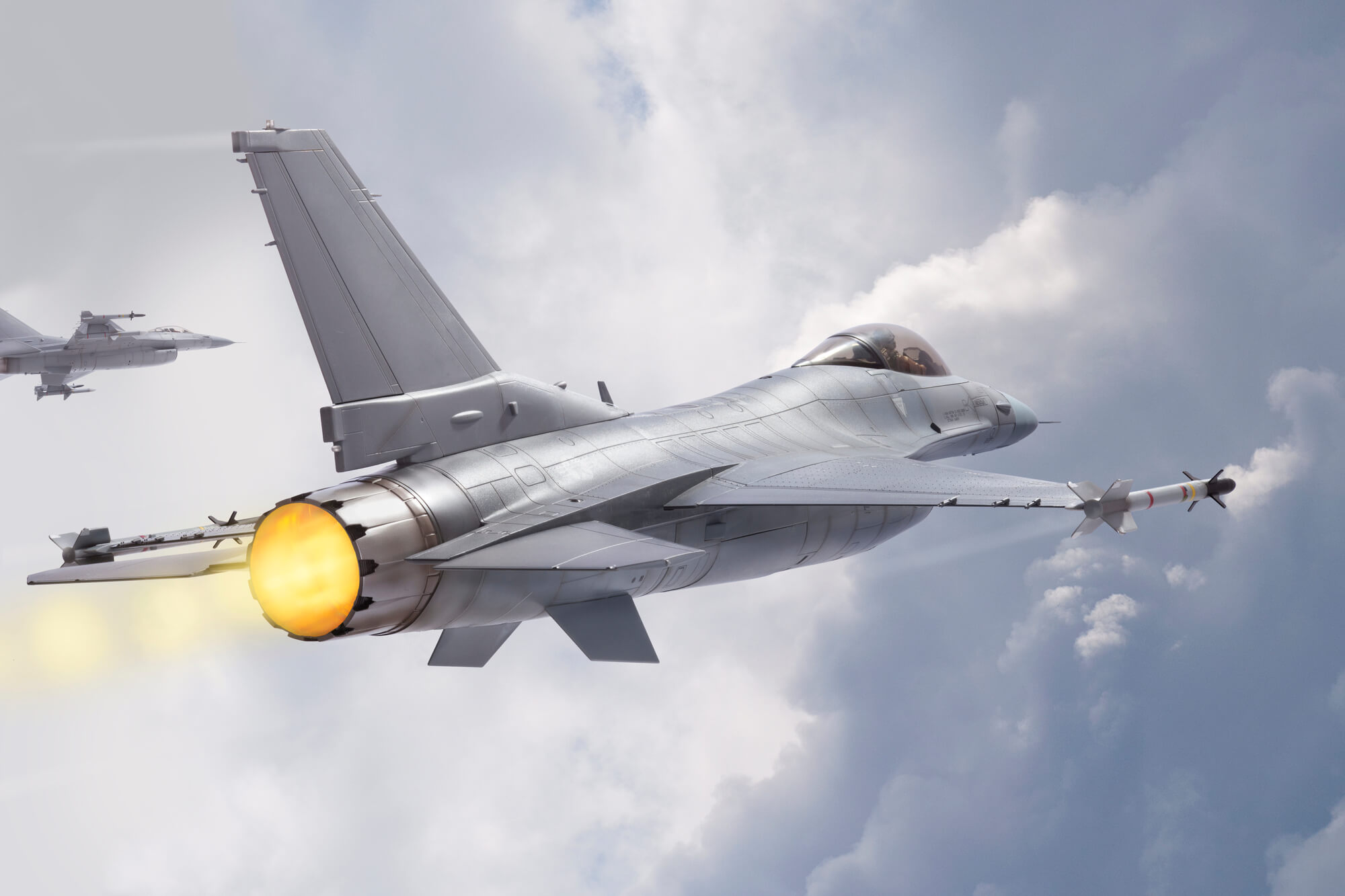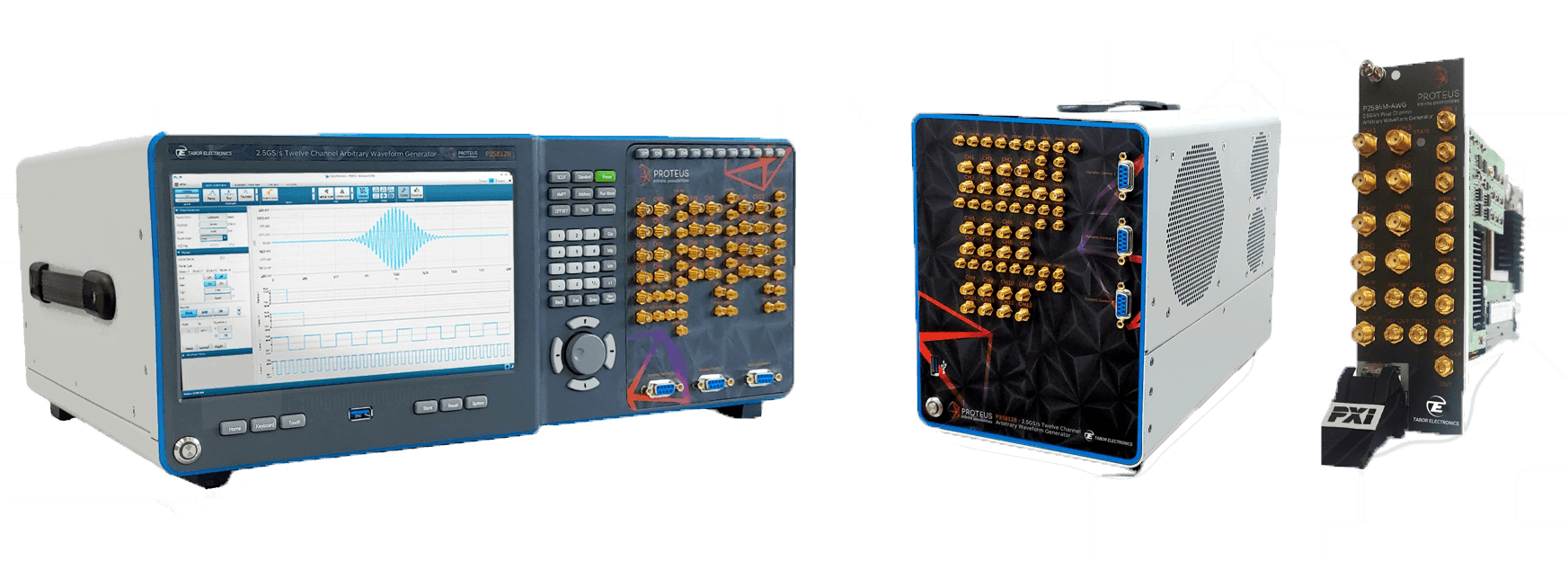The aerospace and defense (A&D) industry is constantly evolving - new requirements and specifications to counter the next set of adversarial threats drive the need for advanced solutions and architectures. Defense electronics and the industry that serves this market always needs to be one step ahead, providing high precision instrumentation, subsystems and components for Radar, Electronic Warfare, Satellite and Communications systems. Often industry standard interfaces or form factors are required such as PXIe, VXI, or LXI. And in many cases products need to prove they are dual use, i.e., have a proven commercial application as well as a military application. These products are usually referred to as ‘Commercial Off the Shelf’ or COTS.
An Arbitrary Waveform Transceiver (AWT) is a COTS product designed to simplify systems design while addressing, the latest next generation requirements and threats. Both during the Research and Development R&D milestones, and as a key tool in the mission critical Test and Elevation (T&E) milestones.

The Role of Arbitrary Waveform Generators in Aerospace and Defense
For both Airborne Systems and Ground Systems Test and Evaluation requires the analysis and generation or emulation of Radar threats.Threat Emulation requires the recreation of enemy radar signals, both the behavior of the electromagnetic pulses under different operating modes, such as track and search, but also second or third order electrical characteristics of the signal needs to be created such as rise/fall time, ringing and droop.
If a signal can be mathematically modeled in tools such a MATLAB or defined in a threat library, then an arbitrary waveform generator (AWG) can reproduce the signal. Next-gen AWGs can generate any signal from simple sines waves, basic modulation (AM/FM), digital bus generation (MIL-STD-1553) to offering real-life scenarios, real-time monitoring, fast feedback loops, and are often key systems-blocks for creating Electromagnetic Environments (EME) for both R&D and T&E testing.
Some applications can stretch the capabilities of sub-systems and instrumentation. For example, emulating or creating signals that could defeat a surface to air missile (SAM), Ground to Air Missile (GTAM), or even a cruise missile (SSM) – that uses high resolution radars for target or ground tracking. A high-resolution radar will employ a Linear Frequency Modulation (LFM) or Chirp type of signal. This requires that the instrumentation has a wide bandwidth. With the ability to sweep over multiple GHz of the frequency range.
As well as emulating enemy signals, creating a real-life background environment is also key. Background EME (Electromagnetic Emissions), can be cell towers, broadcast TV and Radio towers, and Civilian Radar installations. Defense Systems and devices need to be able to work in environments when these large RF fields are present and ensure that the Systems or Device Under Test (DUT) are not susceptible to large external Electromagnetic Interference (EMI).
More articles about Aerospace and Defense>>

What are Next-Gen AWGs?
Next generation Arbitrary Waveform Generators (AWG) with the latest Digital to Analog Converter (ADC) technology combined with deep memory and real-time waveform streaming, can generate not only baseband signals or IQ signals but have the capability of producing signals direct to RF and Microwave. VHF, UHF and L-Band, S-Band, C-Band and X-band signals can be generated producing faithful reproductions of Search Radar, Track Radar and Mono-pulse Fire Control Radar (FCR). A next generation AWG should have features such as real-time IQ modulation, Digital Up-conversion and Interpolation built into its FPGA or directly implemented in the DAC (Digital to Analog) converter chip itself.
A next generation AWG can also integrate an RF Analog to Digital Converter (ADC) into the unit. Making the unit a transceiver or an Arbitrary Waveform Transceiver. With this capability the next waveform to be played out is a function of the received waveform – and in many cases, there is no a priori knowledge of what a threat will do, and the instrument needs to respond with an appropriate waveform sequence. Having the ability to receive and decide on what the next waveform should be is fundamental in Hardware-in-the-loop (HWIL) systems.
Test & Evaluation systems can be ground based - on the range (land range or sea range), airborne as part of a flight test program, in lab testing Line-replaceable units (LRU) or sub-systems. Having multiple form factors of instrumentation helps ensure that the same capability can be deployed in the lab, on the range, or on the platform under test. The Proteus Series by Tabor Electronics is a great example of such an advanced AWG that is widely preferred by aerospace and defense companies and operational forces just as Navy, Army and Airforce. It has sample rates up to 9GS/s and multiple Nyquist zone frequency range capability of more than 10GHz.
Proteus AWG by Tabor Electronics The Proteus Series of arbitrary waveform generators by Tabor Electronics is the perfect example of a next-gen AWG/T that is ideal for applications ranging from Radar and communications to electronic warfare. It’s available in multiple form factors such as industrial PXIe, desktop, and benchtop. The PXIe version also includes the advantages of the PCIe such as high-speed data transfer for streaming and very high channel counts for complex threat environments.
Here are a few of the top features of the Proteus desktop AWG/T by Tabor Electronics:
• Dual, four, eight, or twelve-channel 1.25GS/s & 2.5 GS/s 16 bit, or dual-, four- or six-channel 9GS/s 16 bit, AWG & AWT configurations
• Integrated NCO for digital upconverting to microwave frequencies
• Real-time data streaming directly to the FPGA for continuous and infinite waveform generation
• 9GHz bandwidth, 2.7GS/s 12-bit digitizer option for a feedback control system and conditional waveform generation
• Innovative task-oriented sequence programming for maximum flexibility to generate any imaginable scenario
• Up to 16GS/s waveform memory with the ability to simultaneously generate and download waveforms
• Excellent phase noise and spurious performance• User customizable FPGA for demodulation digital filtering and application specific
• Space efficient Desktop platform, with USB 3.0, 10G Ethernet, and thunderbolt high-speed interfaces
AWG/T - Simply and enhance Test and Evaluation (T&E)
As noted above, arbitrary waveform transceivers (AWT) are all-in-one solutions. They can transmit, receive, and perform digital signal processing without the need for additional equipment. This saves time, reduces costs, and enables engineers to experiment and push the capability of systems under test to the limit, ensuring the warfighter is prepared for any scenario. Since their recent introduction, advanced direct to RF arbitrary waveform generators and transceivers have become an indispensable part of R&D, T&E and manufacturing within the aerospace and defense electronics business. As this market will continue to evolve as threats become more advanced using artificial intelligence (AI), low probability of detection waveforms (LPD) and even Quantum physics-based radar and communications systems, a safe bet for an evolving test platform for these systems is the Tabor Proteus Family of Arbitrary Waveform Transceivers.
Meta Description: Defense electronics: Learn how advanced arbitrary waveform generators (AWG) and transceivers by Tabor Electronics are helping the aerospace & defense industry.